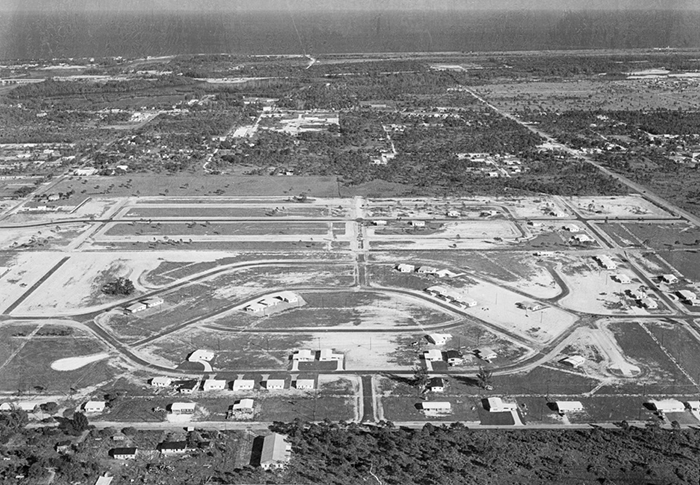Plumosus City: A Forgotten Chapter in Jupiter Fl History
![]() 6 min read
6 min read
The history of Plumosus City is a tale of independence, defiance, and forgotten legacy. Situated in Florida, this unique municipality emerged from a dispute with its neighboring town, Jupiter, and has since become a curious chapter in the state’s history. Let’s delve deeper into this story of a breakaway town and its journey from inception to dissolution. As we approach the upcoming Loxahatchee River Heritage Day at the Jupiter Inlet Lighthouse & Museum, it’s essential to reflect on this unique chapter in the area’s history—a tale of agricultural defiance, civic ambition, and cultural evolution that has left an indelible mark on the community.
Origins of Discontent and Independence
The Town of Jupiter, an ambitious municipality with a population of less than 200, incorporated in 1925. Despite its modest population, Jupiter’s town council enacted a comprehensive property tax regime which even extended to agricultural lands. This imposition led to immediate resistance from the region’s asparagus fern growers, notably including the Pennocks, whose sprawling plantations spanned acres of verdant land.
The farmers’ dissatisfaction with the new taxes, coupled with a perceived lack of municipal benefits, culminated in a legal victory in 1929. The courts granted them the right to exclude their lands from the town’s jurisdiction, a move that would set the stage for the establishment of Plumosus City.
Birth of Plumosus City
Named after the asparagus plumosus ferns cultivated by its residents, Plumosus City incorporated on May 22, 1930, encompassing a six-square-mile area along Center Street and Loxahatchee River Road. This nascent municipality had fewer than 100 residents, including just 28 qualified male voters.
The inaugural government consisted of a Mayor, Town Clerk, Town Marshall, and a Board of Aldermen. Notably, many of these initial officials had served on Jupiter’s town council, underscoring the depth of their discontent with the previous administration.
Plumosus City’s leadership swiftly moved to reassure its citizens of a tax-free existence. Public expenses were managed by subscription, and officials served without compensation. This spirit of frugality and community self-sufficiency would define the city’s brief but notable history.
Governance Without Taxes
Plumosus City’s governance was a testament to its community spirit and independent nature. The city’s inaugural officers were:
- Mayor: Amos E. Bassett
- Town Clerk: Lloyd V. Minear
- Town Marshall: Torrence Force
- Town Attorney: Arthur Ray Roebuck Sr.
The city’s aldermen, including Bassett, Minear, William T. Bogardus, Walter H. Stephens, and J. F. Turner Jr., set an important precedent by agreeing that Plumosus City would not impose municipal taxes. Instead, any necessary expenses were covered through the aforementioned voluntary contributions from its residents. This unique governance model underscored the city’s independent spirit, with officials serving without pay and operating without municipal buildings.

Eastview Manor (foreground) and Penn Park under development circa 1958. Eastview Manor has since become part of the Town of Jupiter, but Penn Park remains unincorporated – part of the legacy of Plumosus City. (LRHS Carlin Collection)
The End of Plumosus City
Despite its early success, Plumosus City faced challenges in maintaining its independence. In 1932, the Town of Jupiter attempted to overturn the exclusion of properties from its jurisdiction. Jupiter’s legal team argued that the breakaway residents were receiving municipal services, including police protection and electric lighting. However, the lawsuit was unsuccessful, allowing Plumosus City to continue its independent course.
Mayor Fred Turner, who succeeded Bassett around 1932, held his position throughout the remainder of the city’s existence. The last election was held in 1940, with Turner and Bassett re-elected as Mayor and Town Clerk, respectively. The Board of Aldermen continued to function until around 1934, after which Plumosus City gradually faded from public consciousness.
Plumosus City’s Legacy
Even after Plumosus City’s dissolution, its legacy lingered. Residents of the Pennock Point area considered forming their own village, which would encompass parts of the former city. Despite interest from notable figures like Shirley Pennock Floyd, Dr. V. D. Stone, and others, this plan never materialized. Today, Pennock Point and the Loxahatchee River Road corridor remain unincorporated.
The story of Plumosus City exemplifies the rich cultural and historical tapestry of the Loxahatchee River region. Its journey from agricultural defiance to independence, and its eventual dissolution, is a testament to the area’s resilience and spirit. As we celebrate Loxahatchee River Heritage Day at the Jupiter Inlet Lighthouse & Museum, we honor this legacy and its role in shaping the community, reflecting on the past and drawing inspiration for the future.
